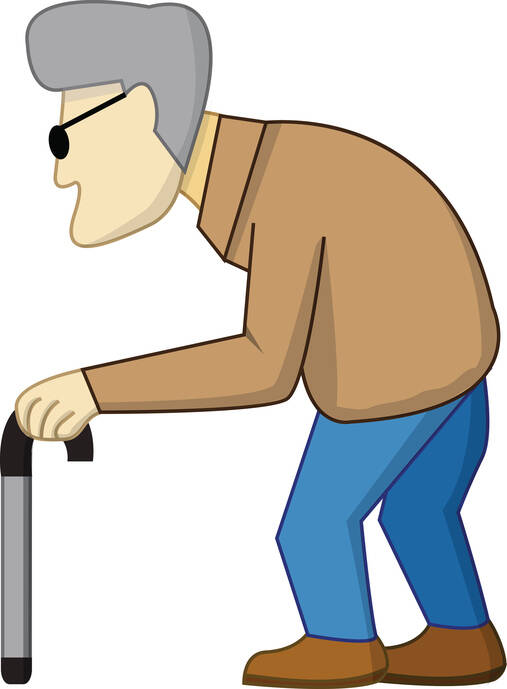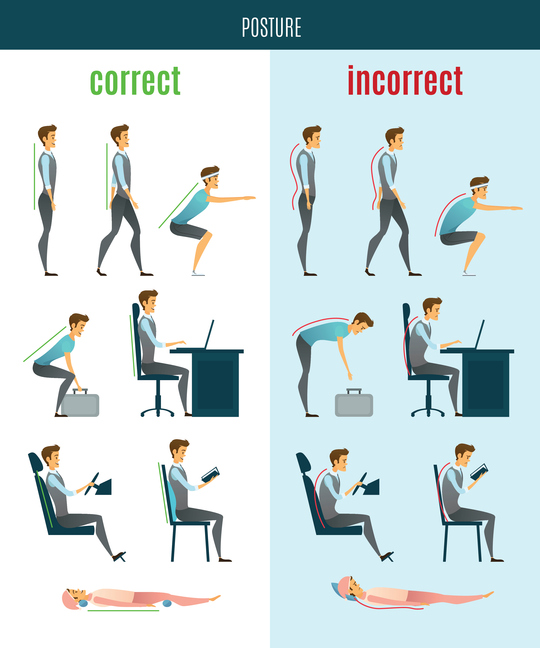- wikiskripta.eu - rickets
Hump: What are the most common causes of a hump on the back and neck?

Degenerative changes are not the only cause of its occurrence. Also, it is not only older age. Incorrect posture and a negative working environment also contribute to its occurrence. Other diseases can also be the reason for the development of a hump.
A hump is technically called a gibbus. It arises as a result of bone disease, possibly in metabolic disorders. But its formation is also conditioned by disorders of fat or calcium deposition.
In the case of some diseases, it may be the primary symptom of the disease. Often, other symptoms are also present, long before a visible hump begins to form.
The hump forms mainly on the spine, either at the cervical level or even below. In some diseases, the hump only forms in childhood - it can also be observed in scoliosis. However, it usually forms in adulthood.
Hump and degenerative changes
Degenerative changes form over the years as we age. Bones and the overall musculoskeletal system lose flexibility, some structures dry out (lose water).
The main reason for this is the aging of the organism. But part of these changes is also conditioned by lifestyle. That is also why the formation of a hump is most noticeable in older age.
The negative influence is due to sedentary work, work at the computer, microscope, limited movement, poor posture, high weight.

Morbus Scheuermann and Bechterev
Morbus Scheuermann is a disease characterized by excessive flexion of the thoracic spine. Its cause is not fully understood. It can also be found under the names Scheuermann's disease, kyphosis dorsalis juvenilis, adolescent kyphosis, juvenile kyphosis.
Bechterew's disease is a chronic inflammatory disease of the vertebrae of the spine. Its cause is also not entirely clear. The development of this disease takes years and is manifested by excessive spinal flexion.
These two diseases do not produce a picture of spinal flexion and may resemble a hump. But it is not a gibbus in its true sense (excessive kyphosis of the thoracic spine).
Hump in rickets
Rachitic hump is a disease most common in children. The spine is too soft and bends due to vitamin D deficiency. The disease is also known as rickets or rickets.
In addition to vitamin D, it is possible that there is not enough calcium (calcium, Ca) in the body. Another type occurs when there is a lack of phosphate, which is lost in increased amounts through the kidneys.
Even in osteoporosis
A hump is also quite often formed in osteoporosis. This is a metabolic disease of the bones. It is a thinning of the bone tissue. Calcium is lost in the bones. It is manifested by increased bone fragility, even with normal contact.
.jpg)
There is pain in the spine, reduction in body height, less mobility of the bones and a hump develops in kyphosis. Kyphosis can be thoracic and sacral. A hump develops in thoracic kyphosis when the spine tilts forward.
This causes a hump to form on the back of the neck in the area below the neck. Often the formation of this type of hump is particularly characteristic of older people and the elderly.
Hormonal disorders
Sometimes osteoporosis can also be caused by a hormonal disorder. The thyroid gland regulates the hormones needed to build calcium into the bones. Therefore, for example, if there is not enough of a hormone due to poor thyroid function, poor bone development often occurs.
In some cases, a hump can also be caused by excessive fat deposition due to a metabolic disorder. In this case, fat is excessively deposited on the cervical spine, resulting in a hump.
A hump as part of a pituitary adenoma
In addition to these diseases and defects of the spine, the hump also manifests itself as a component of pituitary adenoma. Either excessive or insufficient production of a hormone occurs. This production is controlled by the pituitary gland.
When cortisol production is increased, the abdomen enlarges, the face becomes larger and more rounded. And a hump forms in the spine. Excess cortisol can also cause osteoporosis.
Cushing's syndrome and gibbus
In Cushing's syndrome, for example, fat is deposited around the cervical spine, the neck and there is also weight gain. These symptoms are characteristic of the disease.
TIP: Information about Cushing's syndrome.
Both fat deposition and weight gain are also caused by elevated blood sugar levels (hyperglycemia). This fat deposition is also known as lipidodystrophy.
Apart from this, the syndrome can be a result of corticosteroid treatment. Fat is also deposited around the abdomen, neck and also on the face. But generally it is a symptom of a more serious disease. So it is better to seek professional examination when it is noticed.
Congenital defects
Although rarer, it also occurs as a birth defect of the spine. One of these diseases is achondroplasia, for example. This is a hereditary form of body disproportion.
It is characterized by abnormal bone growth, a small stature, short upper and lower limbs, a larger head in proportion to the body, a rounded forehead and a smaller nose, as well as a gibbus.
Hump and other diseases
In tuberculosis of the bones, a hump is formed due to mycobacteria infecting some vertebrae. Where the spine is bent and a hump is formed.
As a consequence, a hump is also formed during treatment with virostatics. This is the case, for example, in the treatment of HIV. This is the human immunodeficiency virus, the causative agent of AIDS.
Video on the causes and treatment of excessive spinal flexion
Interesting resources










